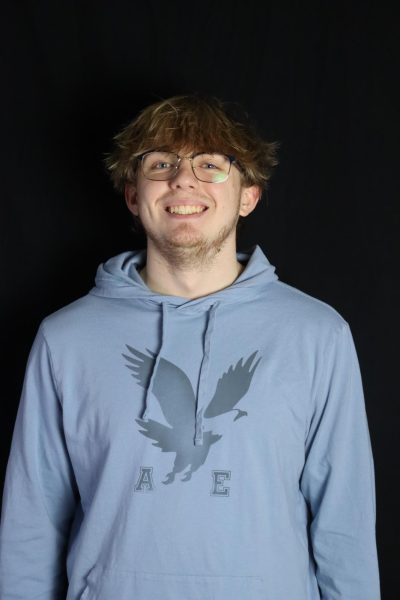Manual’s MST magnet is among the most academically rigorous and competitive high school programs in the state. To middle schoolers applying to the magnet, that sense of competition can be exciting.
“When I was applying, I had this thought that if I wanted to do something seriously in the future, then this will help me,” Vedha Balamurugan (12, MST) said. Competition can act as a catalyst for improvement, and many young students are thrilled by the idea of challenging themselves with a more rigorous learning environment, but MST Magnet Head Keri Polevchek worries that the level of competition in the magnet may have exceeded a healthy level.
“I remember when I first got to Manual I wanted students to do peer reviews for their science fair projects, and they didn’t want to do it because they were worried someone else would try to steal their work. That hadn’t even crossed my mind,” Polevchek said. Many students in the program share Polevchek’s sentiment that the competition has gone too far.
“These kids take it to a whole new level. Like in Science Fair, unless you were trying to cure cancer your project wasn’t good enough. And that was pretty demoralizing,” Neha Visvanathan (12, MST) said. Since applying, Balamurugan has begun to feel similarly.
“I was asking this guy about where he’s applying to college once and he wouldn’t tell me. He said, ‘I don’t want people knowing because it’s more competition.’ You can’t even have a casual conversation with someone about college,” Balamurugan recalled.
The origin of this sense of competition is unclear. While it may be assumed that it’s something with the academic structure of the magnet, Balamurugan suspects something else within the magnet’s social fabric creates such an intense environment.
“Parents start comparing their kids to other people’s children. And then their kids come to school and they start to look at other students as competition instead of friends,” Balmaguran said. She believes that rather than the program itself, home life plays a central role.
While home life certainly seems to play a role in the origins of MST’s competitiveness, Polevchek thinks that it runs deeper, with students placing pressure on themselves.
“I hear students talking about getting rejected from Ivy Leagues like it’s the end of the world, but like, no! You’re doing wonderfully, you’re amazing.”
In a magnet where cutthroat competition rules the culture, Polevchek has worked to ensure that even in the face of failure students remember that they’re amazing. “This year has really been about trying to make it less competitive. We’ve been working on a culture change and trying to find more positives.”
One way Polevchek has tried to help students “find more positives” is through the establishment of various social events throughout the year. In September, MST students got to celebrate and reconnect after summer break with the MST Ice Cream Social. In January, students get the opportunity to relieve some pressure from the Science Fair at the MST Semiformal. And in April, students will celebrate the end of the year with a movie night. The goal of these events is to give MST a chance to grow in a non-academic sense, enabling the magnet to move away from constant competition.
“A lot of people don’t even consider going when it’s first brought up, but when you convince them to come they end up really enjoying themselves. I think it helps to enjoy something together that doesn’t revolve around competition,” Balamurugan said.
Polevchek’s goal isn’t to eliminate competition entirely.
“We’re working on finding more positives while keeping that academic drive. It’s a push for balance,” Polevchek said. This “push for balance” came alive in the redesign of the Science Fair. All MST students are still required to participate but now, students can choose their own “paths.”
The traditional path, known as the “Crimson Path,” follows the same science fair model that the magnet has always done in the past, enabling participants to compete at a regional, state and potentially international level. Students who follow this route have the potential to earn scholarships and other rewards for their projects. This route has historically been hypercompetitive and while it can serve as an excellent opportunity, for many students it’s a major source of stress.
The new path, the “Ram Path,” encourages students to produce a similar project as the Crimson Path, but the emphasis is less on outperforming peers and instead on exploring a topic of interest.
“It’s taken away the intensity of ‘I need to make this top-notch project’ and turned it into ‘let’s investigate a question,’” Polevchek said. Polevchek’s efforts mark a new era for the MST magnet. Historically, the program has been thought of as ruthless, competitive and stressful, but over the past couple of years, that narrative has slowly begun to change.
“I hope that future students walk away and say that they had a chance to focus in areas that they’re interested in,” Polevchek said. MST has historically developed students by generating pressure, but the magnet is now shifting towards developing students by nurturing their passions.










Grady Amick • Feb 15, 2024 at 5:59 pm
Caleb, this is amazing. Introducing more social events to limit MST competitiveness in all probability won’t work–it’ll only serve to add water to the blood of cut throats. I’m excited, nevertheless, to see what happens with the new “paths” system of science fair, whether it actually limits competition or just brings shame to students who take the Ram path. Only time will tell. Great work as always!